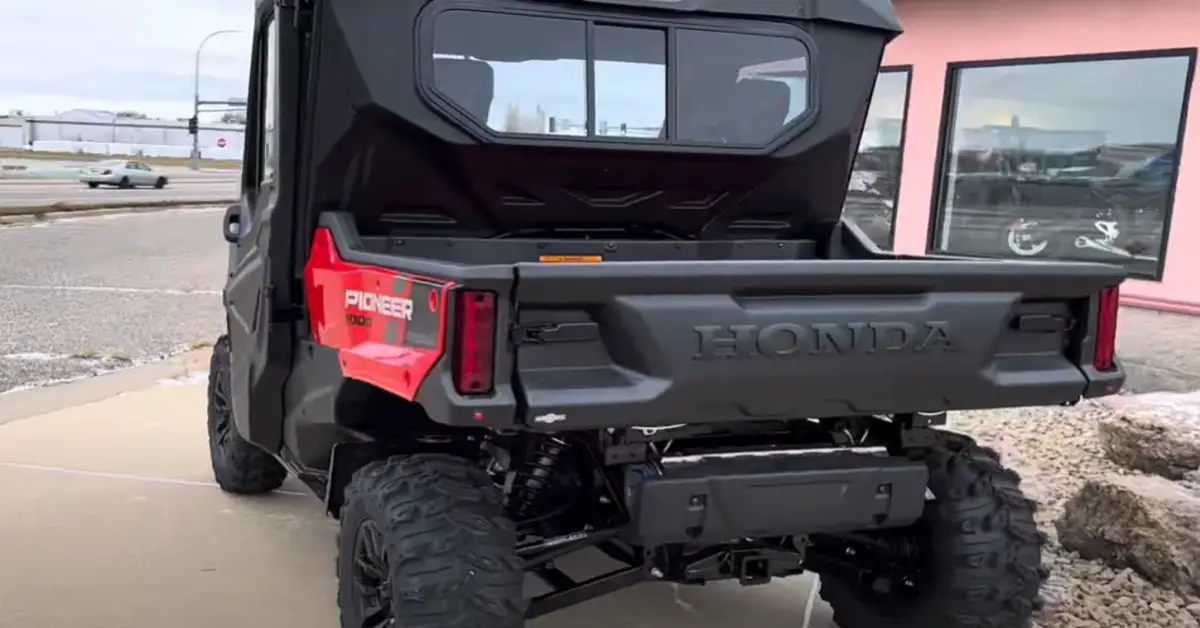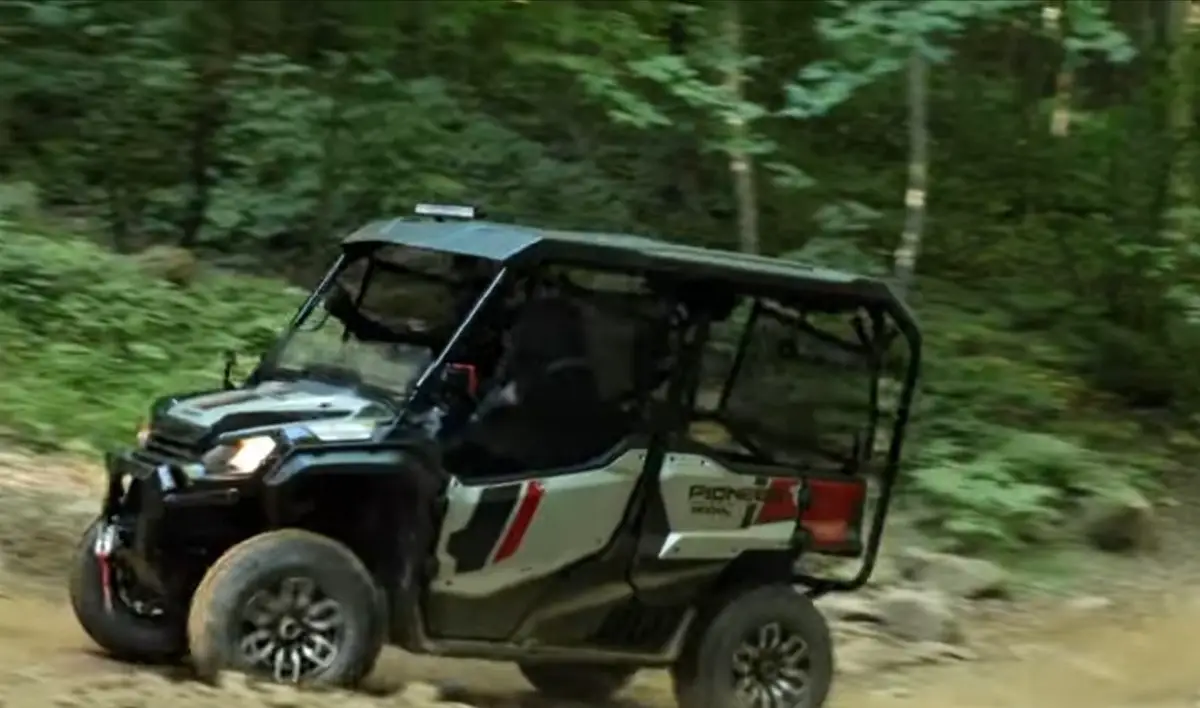Engine is the heart of any vehicle; it completely depends on the power of the engine to determine the vehicles operating capacity.
When we talk about UTV engines then its size which matter the most as it determines its performance and its capability.
The UTV Engine Sizes vary and is measured in cubic centimetres which determines the capacity of its chambers where the ignition takes place.
It is very important to take into consideration the size of the engine while purchasing a UTV. Are you looking to get more information on utv engine sizes.
I have this Honda pioneer which comes with 1000cc engine. I have this from few years, and it is working fantastic and meeting my all needs.

UTV engine sizes are available in various UTV engine sizes ranging from 300cc to 1000cc depending upon what the vehicle capacity to operate is.
The size of the engine plays a vital role in defining its performance.
Smaller engines ranges from 300cc to 500cc and are basically best suited to perform light tasks and for leisure activities but not adventure activities.
On the other hand larger engines sizes ranges from 700cc to 1000cc and is capable in performing heavy duty tasks such as riding on rugged terrains and are best suited for adventure-based activities and working on farms.
While studying the engines sizes always study its load capacity, top speed of the vehicle etc as well.

What are the various UTV engine sizes and their performance level?
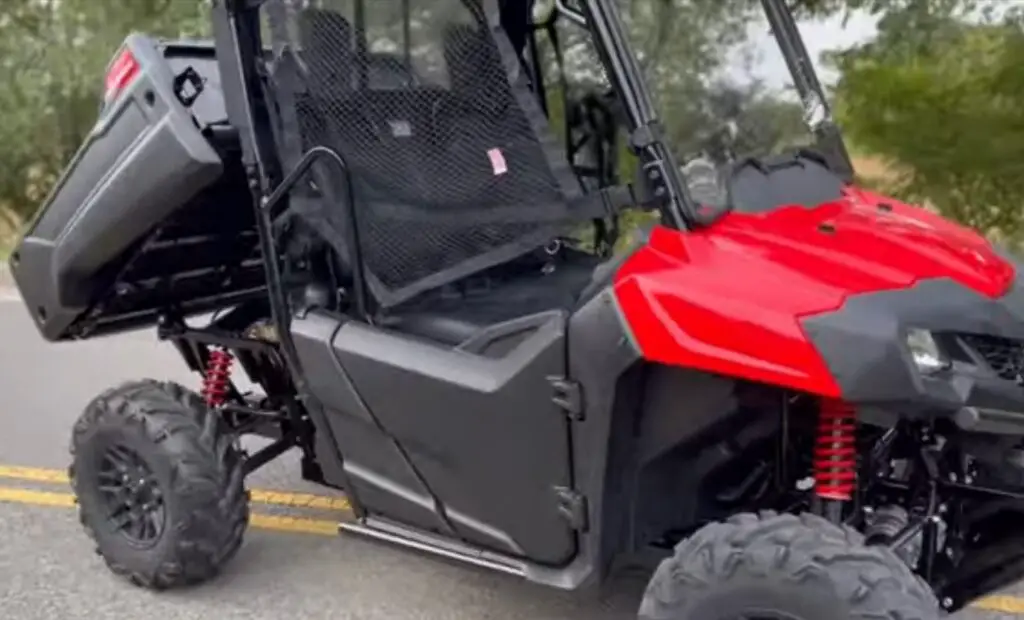
As mentioned above the engines range from small-sized engines to large-sized engines. Small size engines are generally 300cc-500cc and large size engines range from 700cc-1000cc.
Depending upon their size their performance also varies. In fact, it is directly proportional and the bigger the engine, the higher will be its performance.
The below Table 1.1 shows the UTV Engine Sizes with their performance.
In my whole journey in this UTV world, I have tried and used several UTVs. The engine size truly affects the performance of a UTV so always look into it.
Below I have created a list of various engine sizes and performance levels. I prefer High performance vehicles like honda pioneer or polaris rzr for offroading.

List 1.1-UTV ENGINE SIZES AND THEIR PERFORMANCE LEVEL

UTV Engine Sizes:
- 300cc – 500cc
- 600cc – 800cc
- 900cc – 1000cc
- 1000cc+
Performance Level:
- Entry-Level (300cc – 500cc)
- Mid-Range (600cc – 800cc)
- High-Performance (900cc – 1000cc)
- Extreme Performance (1000cc+)
The above table sows just an approximate engine size, however the sizes may differ from different model and manufacturers, in order to get accurate engine size, it is advisable to get in touch with the authorized service center to refer to the manufacturers manual.
Other than the table above there are very many other sizes of Engine prevalent on different UTVs.
Below Table 1.3 shows various different kind of UTV models with their engine size range.
Please note that this is not really a comprehensive list and each UTV in the market has a different range of UTV Engine Sizes which makes then different from the rest and also effects the overall performance of the UTV.
There are several factors I look into a UTV for specific perfromance, but when it comes to offroading and farm work I first look the engine size. The greater the power, more will be perfromance.

TABLE 1.3-UTV MODELS WITH ENGINE SIZE RANGE
| UTV Model | Engine Size Range |
| Yamaha Rhino | 660cc |
| Polaris Ranger | 500cc – 1000cc |
| Can-Am Maverick | 800cc – 1000cc |
| Kawasaki Teryx | 800cc – 1000cc |
| Honda Pioneer | 700cc – 1000cc |
| Arctic Cat Wildcat | 700cc – 1000cc |
| Textron Off Road Stampede | 846cc |
| CFMOTO ZForce | 500cc – 1000cc |
| Yamaha Wolverine | 700cc – 850cc |
| Polaris RZR | 570cc – 1000cc |
| Can-Am Defender | 450cc – 1000cc |
| Kawasaki Mule | 400cc – 1000cc |
| Honda Talon | 999cc |
| Arctic Cat Prowler | 500cc – 1000cc |
| Textron Wildcat | 700cc – 1000cc |
| CFMOTO UForce | 800cc – 1000cc |
| John Deere Gator | 400cc – 1000cc |
| Kubota RTV | 400cc – 1100cc |
| Mahindra Roxor | 2.5L Diesel Engine |
| ODES Dominator | 800cc – 1000cc |
| Kymco UXV | 450cc – 700cc |
| Hisun Strike | 450cc – 1000cc |
| Bennche Bighorn | 400cc – 1000cc |
| SSR Motorsports Rancher | 400cc – 600cc |
The above table does not provide a comprehensive list of all the UTV with their engines.
The sizes of the engines may vary depending upon the make and the model. In order to obtain accurate and up to date information it is advisable to read through the manufacturer’s manual or get in touch with an authorized service center.

Honestly, if I were in your shoes, I’d dive into this UTV Speed Comparison without a second thought. When you’re spending hard-earned money, why risk it on something that’s not going to last?
What are the factors to consider while choosing a UTV with varying engine size?
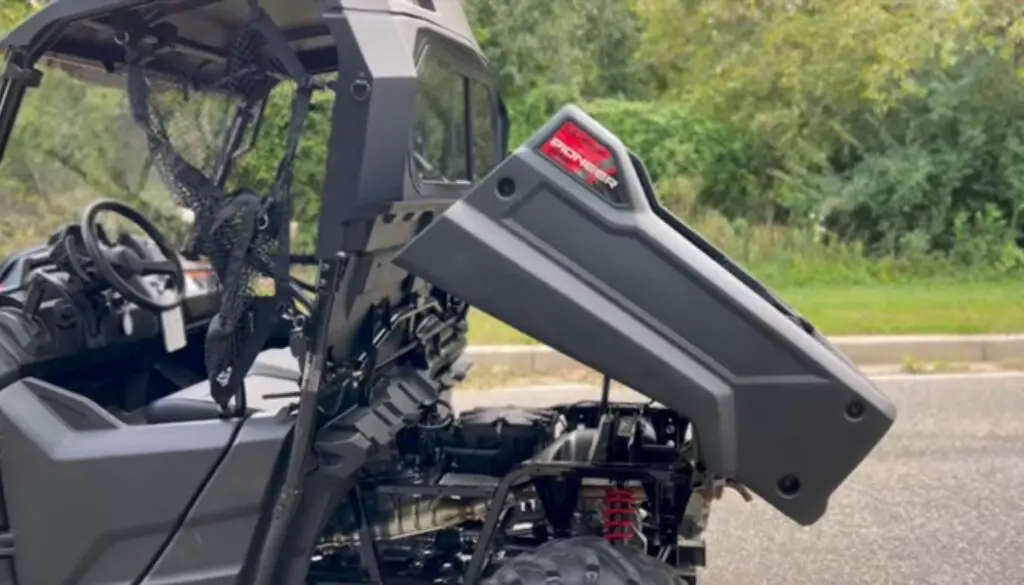
There are various factors which should be taken into consideration while you are choosing a UTV. Bigger the size of the engine better will be its performance.
For higher performance, especially on rough and rugged terrain, it is best to choose a UTV with a bigger size engine.
Remember a bigger size engine also needs more maintenance and care, therefore make sure of your budget, not only a UTV with a bigger size engine will be higher in price but its maintenance cost will also be quite substantial.
The below Table 1.4 mentions the various factors which should be taken into consideration while choosing a UTV based on the size of the engine.
Getting a budget friendly UTV with high performance engine size, might feel tricky to some folks. But I am pretty good at finding the good options. Just like this honda pioneer 1000 (trail riding shot).

TABLE-1.4-FACTORS TO CONSIDER BASED ON THE SIZE OF THE ENGINE
| Factors to Consider | Description |
| Intended Usage and Terrain | Choose the terrain you’ll be riding on and the UTV chores you need to do. Engine torque and power should match your use requirements. |
| Payload and Towing Capacity | Take into account the weight of the items or people you’ll be transporting, as well as the towing capability needed for any trailers or other items you want to transport. Make sure the engine can efficiently manage the load. |
| Speed and Acceleration | Evaluate your demand for rapid acceleration and speed. A UTV’s max speed and its ability to accelerate to greater speeds are strongly influenced by the size of its engine. |
| Fuel Efficiency | Consider the fuel economy of various UTV Engine Sizes, especially if you want to travel a distance or need an engine to run for a longer period of time. Power and fuel efficiency must be balanced. |
| Noise and Emissions | Take local emission standards and noise restrictions into account. Smaller engines are more suited for noise-sensitive or ecologically aware locations since they frequently make less noise and pollutants. |
| Maintenance and Reliability | Because smaller engines put less strain on their components, they frequently need less maintenance and may last longer. Think carefully about your abilities to undertake routine maintenance and the long-term dependability of the engine size you select. |
| Budget | The price of a UTV can vary depending on the engine size, as does the cost of gasoline and maintenance. Take into account your spending limit and the benefits you anticipate from the selected engine size. |
| Personal Preference | Regarding the performance and power of an engine, each person may have distinct preferences. Take into account your degree of confidence and comfort handling a UTV with a certain engine size. |
| Trail Access and Restrictions | Some trails or parks may have specific engine size restrictions. Ensure you are aware of any limitations or regulations in the areas where you plan to ride your UTV. |
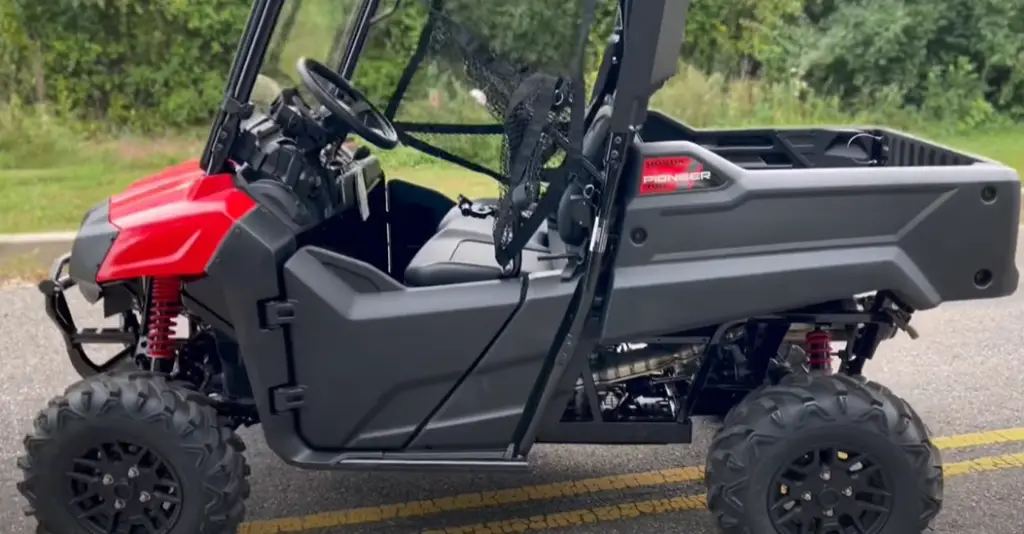
I have knowledge about UTVs and stuff, but often I do not get soem technical details right there. Then for this I research and look for the Youtube videos. For this article this video helped me a lot.
Are there any maintenance and care tips as regards the engine?
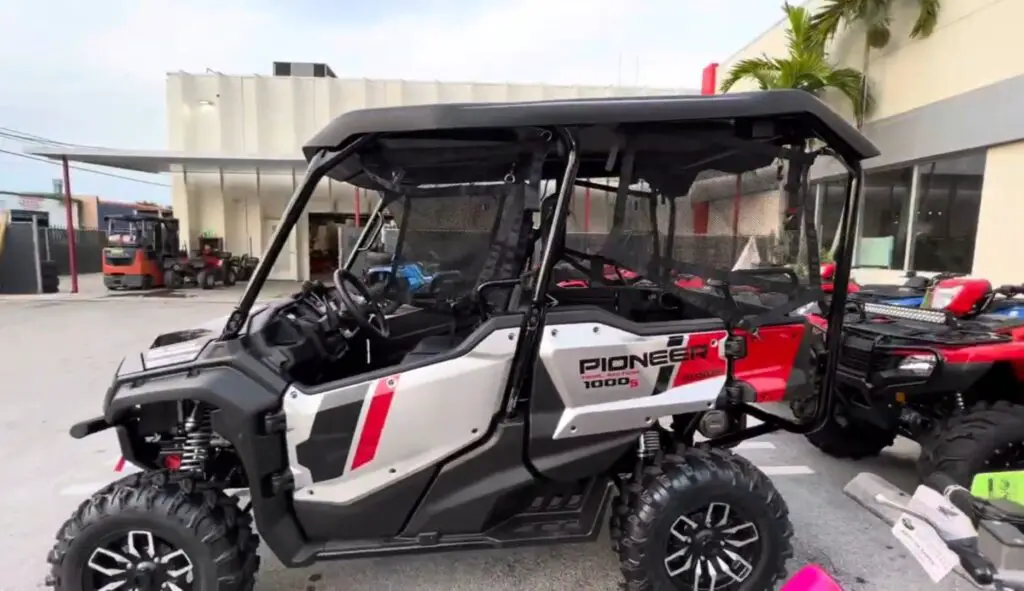
The below Table 1.5 mentions various maintenance and care tips that can take your UTV a long way. Since the engine is one of the most vital components therefore it is vital to take special care.
Few weeks ago I had a UTV maintenance of my Rhino 700 and this is how its internal parts and engine looks. There was no issues out there, but still I made some upgrades to it.

I have schedules for maintenance for my UTVs but it is not possible to do maintenance everytime. So whenever I call someone from service, I do maintenance of all at once. So that my time gets saved.

TABLE 1.5-MAINTENANCE AND CARE TIPS FOR A UTV ENGINE
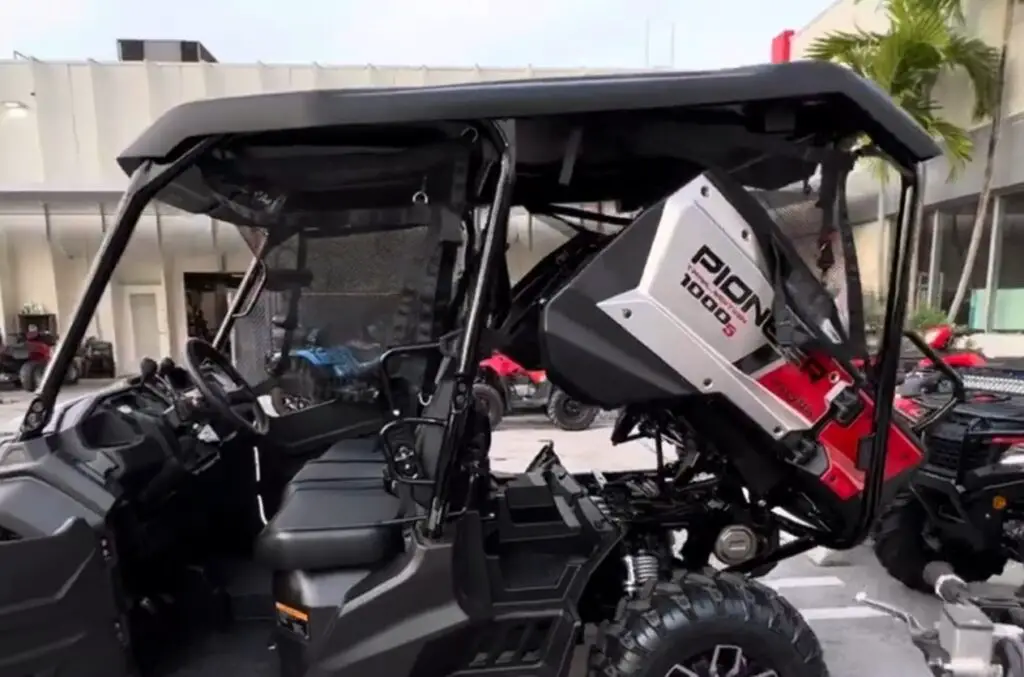
| Maintenance and Care Tips | Description |
| Routine maintenance schedule | For standard inspections, routine checks, oil changes, filter replacements, and general engine inspections, adhere to the manufacturer’s suggested maintenance plan. The engine’s lifespan is extended, and its performance is ensured through routine maintenance. |
| Proper lubrication and fluid checks | Regularly monitoring the oil level and changing the oil at suggested intervals can help to ensure that the engine’s components are properly lubricated. Additionally, check other fluids like coolant and brake fluid, and fill them off as necessary. |
| Cleaning and replacement of air filters | To stop dirt and debris from entering the engine, clean or change the air filter often. Engine performance may suffer if the airflow is restricted by an air filter blockage. |
| Cooling system upkeep | To avoid overheating, keep an eye on the radiator, coolant level, and hoses in the cooling system. Clean the radiator’s fins often and look out for any leaks or obstructions. |
| Maintenance of the fuel system | Use clean, high-quality gasoline, and if the UTV is kept for a long time, think about installing a fuel stabilizer. Make sure the fuel line connections are correct, and regularly examine and clean the fuel filter. |
| Keeping spark plugs clean | Clean and examine spark plugs on a regular basis. To guarantee good ignition and engine performance, replace them in accordance with the manufacturer’s instructions. |
| Inspection of the Belt and Drive System | Check the alignment, tension, and wear of the driver belt. If required, change the belt to ensure effective power transfer. |
| Maintenance of batteries | Maintain the battery’s cleanliness, safety, and full charge. Examine the terminals for corrosion and clean them as necessary. |
| Checks for Gaskets and Sealing | Check the gaskets and seals on the engine for any leaks. Any leaks should be fixed right away to avoid harm to the engine and to guarantee peak performance. |

Conclusion
Engine plays a vital role in the operation of any vehicle. It is the size of the engine which determines the performance of the vehicle.
The bigger the size of the engine, the higher will be its performance. Having said that other components along with the engine make the UTV operational.
In order to make your engine perform to the best of its capacity one must follow a maintenance routine, where the oil filters and the air filters must be clean, the level and quality of the oil should be monitored there happens to be some problem in the engine it is bets to get in touch with a professional rather than try any DIY technique.
I wish someone had pointed me to this UTV Engine Stalling Problem before I made the same mistake. The value of knowing what’s reliable and what’s not can’t be overstated.
FAQs
Is changing the oil in my UTV engine important?
Yes, it is very important to change the oil in the engine and it is advisable to change it every 50-100 hours of operation.
What kind of oil should be used in my UTV engine?
It is important to use only specified engine oil in the engine which has been mentioned in the manufacturer’s manual.
Is it important to clean or replace the air filter?
Yes, it is important to clean and replace the air filter when the need arises. It is advisable to replace it after 20-30 hours of operation or follow the instructions written in the manufacturer’s manual.
Should I be making use of a fuel stabilizer for the long-term storage of my UTV?
Yes, by making use of a fuel stabilizer helps prevent fuel degradation and helps in restarting the engine when UTV hasn’t been used for a long time.
Subscribe for Our Latest Posts! Thank you!
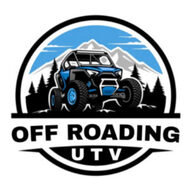 Off Roading UTV Off Roading UTV
Off Roading UTV Off Roading UTV
